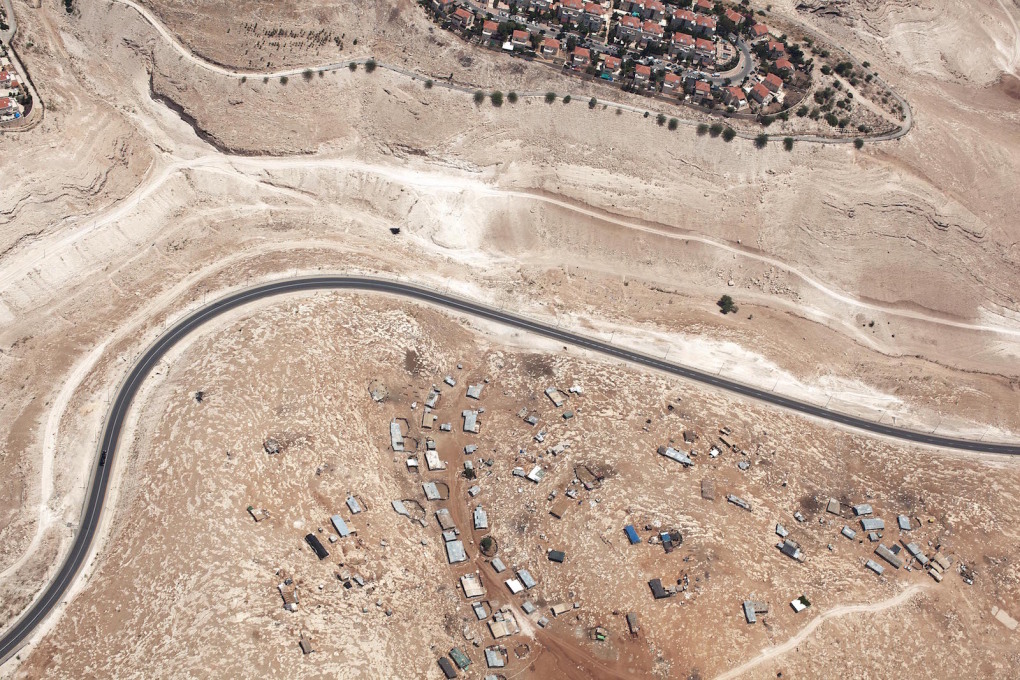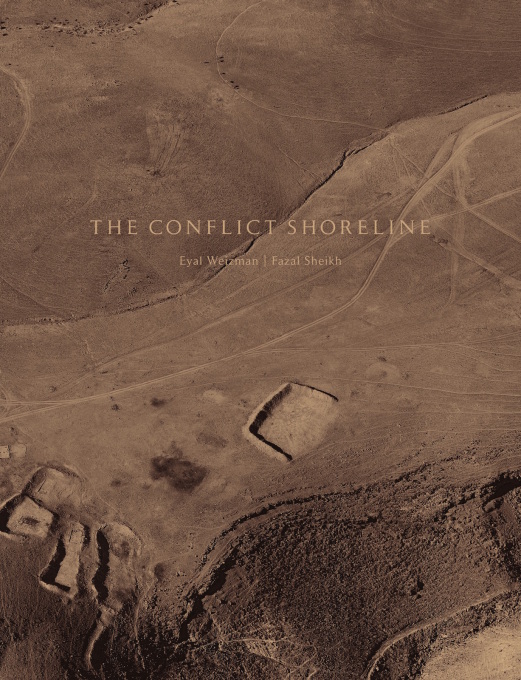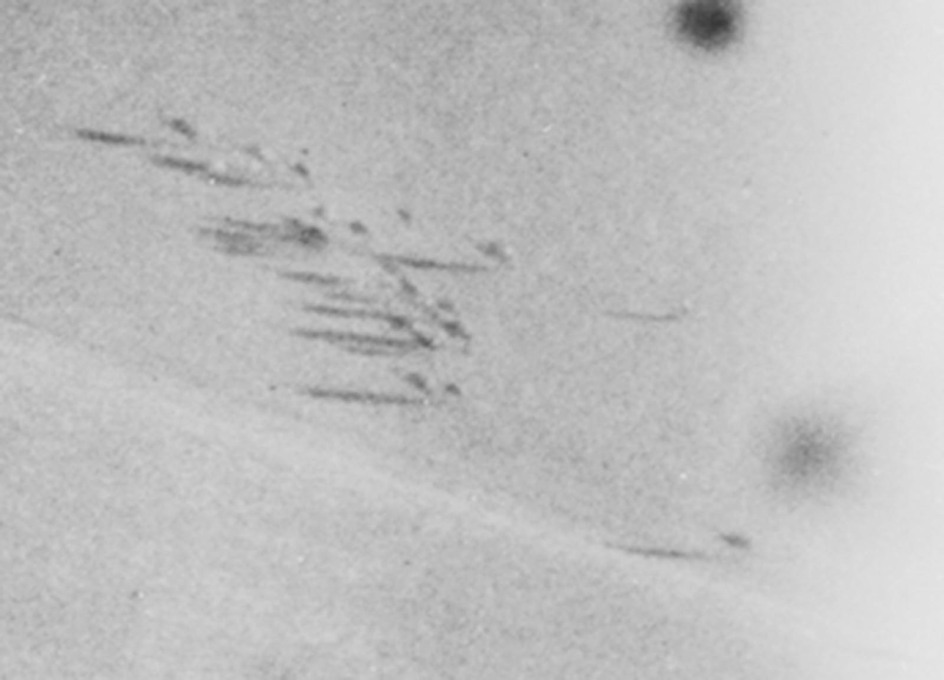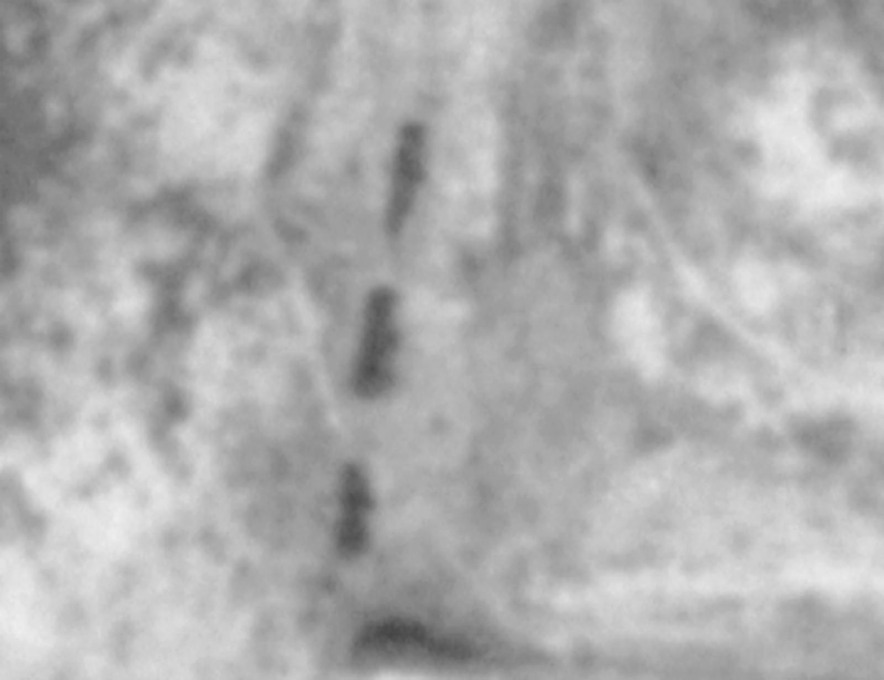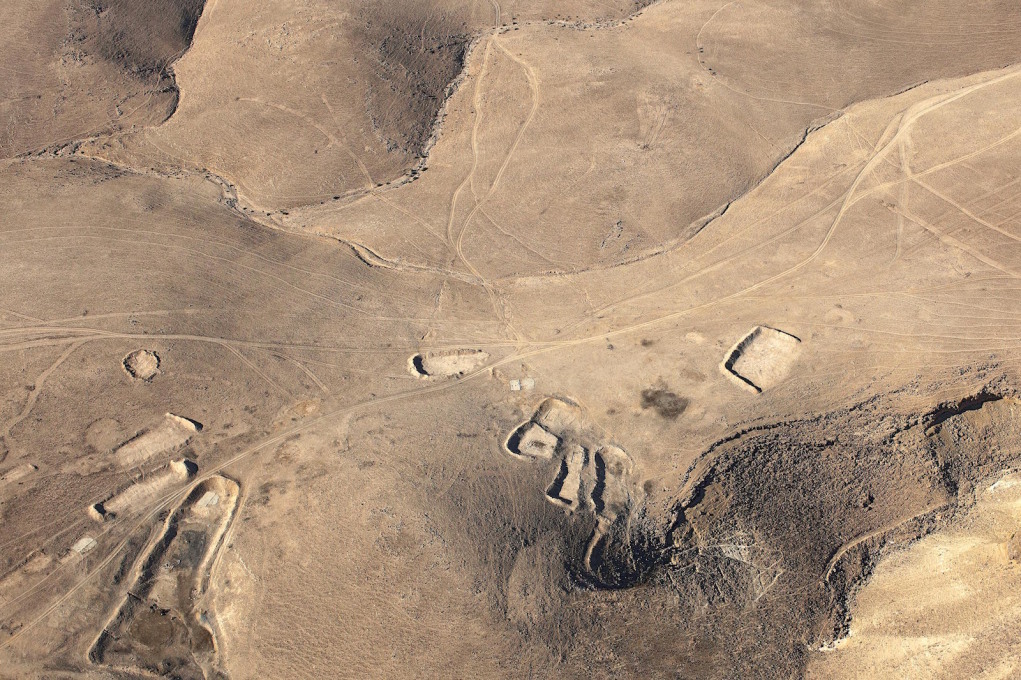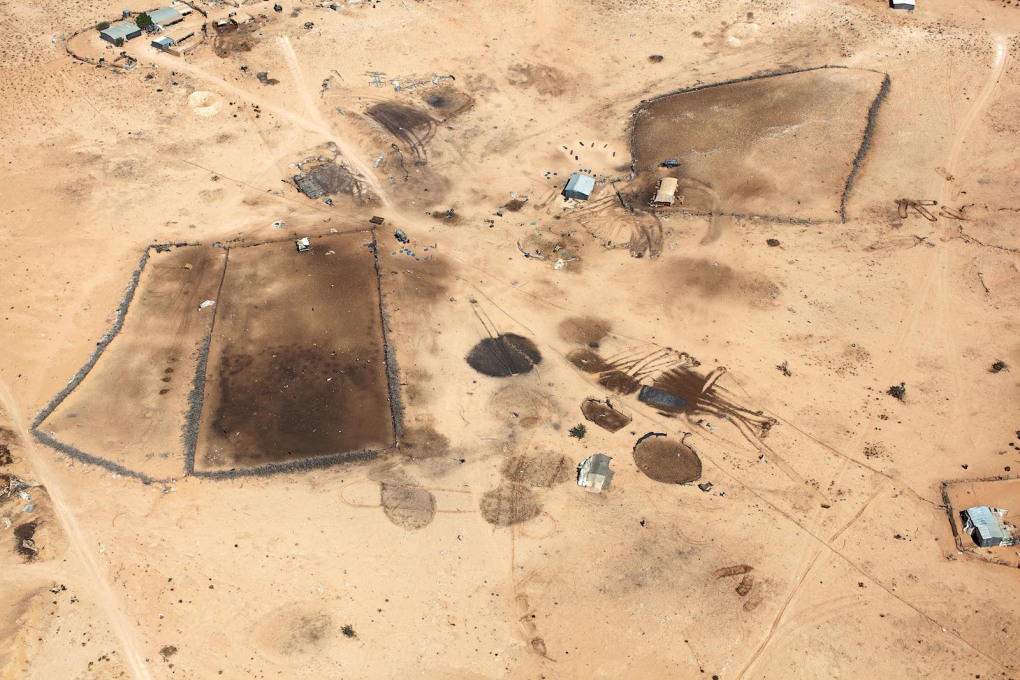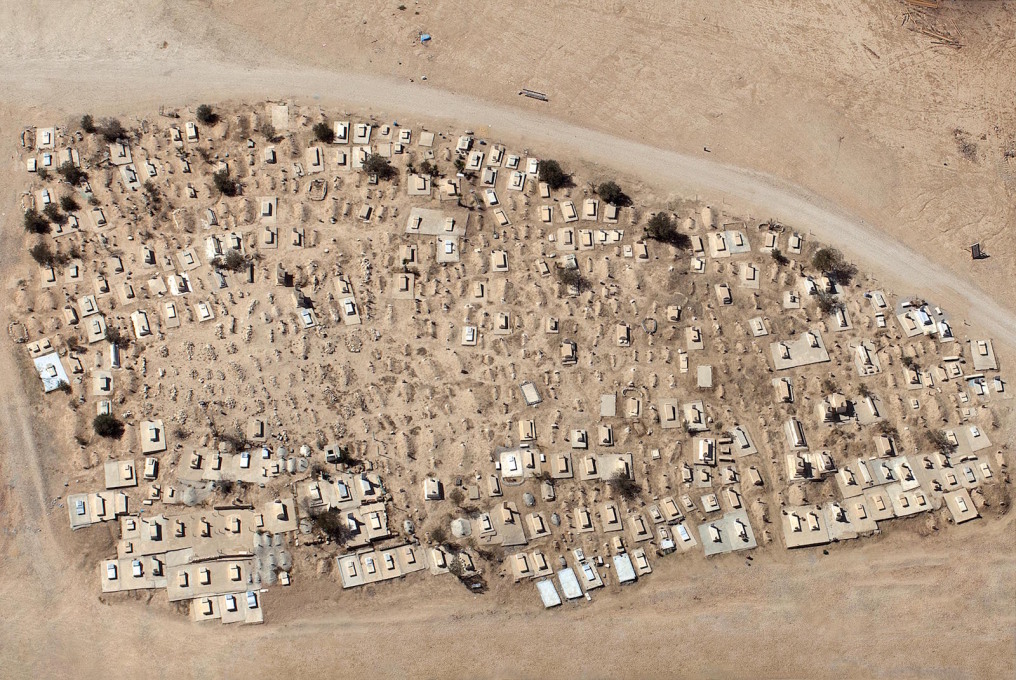The Conflict Shoreline is a new collaborative work between architect and writer Eyal Weizman and photographer Fazal Sheikh. In it, forensic architect Weizman creates a powerful theoretical interpretation, which blends scientific study, detective work and history to explore the changing landscapes of the Negev as they reflect the ongoing conflict between the local Bedouin and the Israeli state. Its core argument rests on the evidence supplied by Fazal Sheikh’s aerial images and the interpretation of archival aerial images which reflect the scars this conflict have left behind upon the very skin of the land. A review for uncube by the politics of space expert Léopold Lambert.
Every photograph is a potential piece of evidence for the situation it reveals. In this regard, The Conflict Shoreline can be associated with the catalogue of the 2015 exhibition Images of Conviction shown at Le BAL, Paris to which Weizman and the research office he founded and directs, Forensic Architecture, significantly contributed. A piece of potential evidence such as the photograph needs to be related to an analytic discourse in order to effectively become an actual piece of evidence, and thus play a role in a legal debate. This is the ambition of the argument made by Weizman using Sheikh’s Negev photographic field research series shot between 2010 and 2015. The book takes evidence of changes in the land itself shown through Sheikh’s aerial images and archival aerial images.
The northern part of the Negev Desert is the site of an asymmetrical conflict between the Palestinian Bedouin population and the State of Israel that has been going on since 1948. The former defend their right to live in the desert and cultivate its soil, the latter has been systematically evicting and demolishing Bedouin settlements. The settlement of al-'Araqib, for example, says the book, has been destroyed and rebuilt more than 65 times. Weizman has gathered historical evidence to show the Bedouin presence in the Negev prior to the existence of the State of Israel, including British army aerial photographs during the Second World War as well as European 19th century Orientalists’ narratives of their travels in Ottoman Palestine.
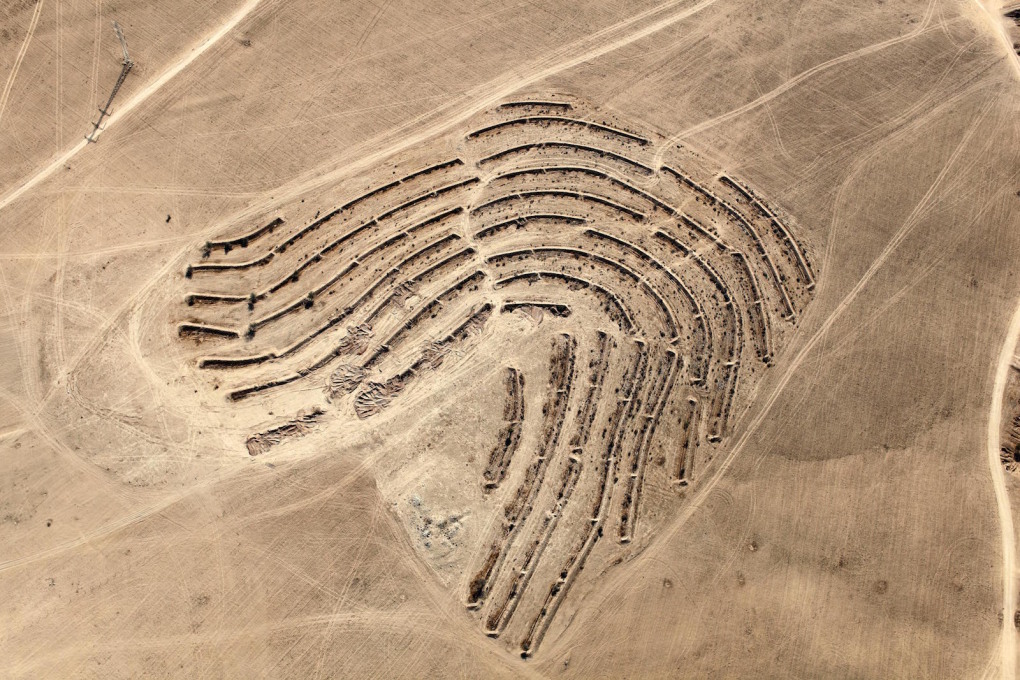
In his analysis of these archival photographic evidences, Weizman is particularly interested in “the threshold of detectability” of the considered element (desert wells for instance) that is captured in each image. Often, the size of a wall is not much larger than one of the silver grains composing the film, making detection of detail particularly difficult. In Sheikh’s contemporary photographs, on the other hand, the Bedouin presence throughout time, despite the repeated demolitions by the Israeli authorities, can be seen through the various marks on the ground remaining from former dwellings and livestock pens.
These two methods of producing evidence allow Weizman to make an interesting philosophical statement on the relationship between the earth and the photograph. When something inscribed in the earth is so small that it corresponds to a grain on a film, photography is approached through its very materiality; inversely, when the earth bears informative marks produced by exposure (or not) to sunlight, we can talk of the “photographic surface” of the earth. This double reading generates a powerful interpretation of the elements that comprise Weizman’s evidence.
When we consider the book’s title, the shoreline evoked here is not a maritime one but rather the shifting line of aridity that separates the Negev from the rest of Israel-Palestine. Sheikh’s photographs of the numerous trees planted in the desert show the extent of Israeli efforts to engineer its shift to the South, thus actualising the biblical injunction “Make the Desert Bloom!” This attempt to engineer climate by the State of Israel is not new: since 1948, helped by the Jewish National Fund (JNF), it has planted thousands of hectares of forests in a strategy to make the Near East climate “more European”, as well as to dissimulate the Palestinian villages evicted and destroyed during the Nakba. In the case of the Negev, the forests are used directly as a means of coercion against the Bedouin villages, a strategy brilliantly exposed by Weizman and Sheikh in the book.
– Léopold Lambert is a Paris-based architect and editor-in-chief of The Funambulist Magazine, its blog and its podcast, Archipelago. He is the author of Weaponized Architecture: The Impossibility of Innocence (dpr-barcelona, 2012), Topie Impitoyable: The Corporeal Politics of the Cloth, the Wall, and the Street (punctum, forthcoming 2015) and Politique du Bulldozer (B2, forthcoming 2015). leopoldlambert.net
The Conflict Shoreline: Colonization as Climate Change in the Negev Desert by Eyal Weizman (text) and Fazal Shiekh (photographs) is published on September 29, 2015 by Steidl in association with Cabinet books.
Further reading on uncube: The Architecture of Violence - an interview with Eyal Weizman about his contribution to Al Jazeera’s 2014 documentary series Rebel Architecture and A Common State – Finding Architectural Imaginaries for Israel-Palestine by Léopold Lambert.




